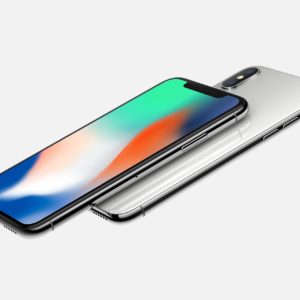iOS Historical Underpinning And Evolution: Apple launched its first iOS then called iPhone OS on June 29, 2007, with it’s very first iPhone. Since then Apple keeps modifying and changing their OS to meet the modern technology requirement and making all their devices full of awesome features. So in this article, we will completely discuss the historical underpinning of iOS.
iPhone OS 1
Steve Jobs in 2007 introduce iPhone along with iOS. Steve Jobs referred to the operating system as OS X in the conference because it shared a similar Unix core compared to the full-fledged desktop version of the operating system. The first iPhone was very user-friendly and first of it kind to have such a big display and contain very user interactive apps icon which doesn’t change much from the time it was launch.

This iPhone was very useful and compact device of that time among all device. It contains camera, music for music lover as well as the internet, so we can say iPhone was time ahead as compared to the features which were available at that time
iPhone OS 2
Apple expanded the capabilities of iOS with iPhone OS 2 on July 11, 2008. This new version added third-party apps which are currently know as App Store and location services through the newly added GPS unit on the iPhone 3G. Apple also introduced its MobileMe cloud software, but the idea never quite took off.

Any app you wanted to use had to be made by Apple or otherwise in a licensing partnership with Apple. Releasing the iPhone OS SDK changed all that and made iPhones more useful.
iPhone OS 3
Apple was performing well in the market after launching the App Store, but Steve Jobs still had some big advancements for iPhone fans in 2009, including copy/paste tools, MMS support, Spotlight, tethering, and push notifications for 3rd party applications, after two years of reinvention Apple finally took a breath for some fine-tuning. Nothing in iPhone OS 3 was quite as transformative as its previous two releases, but it created richer third-party apps with push notifications and an easier way to search across the iPhone with Spotlight, a feature that Apple still tinkers with years later.

On January iPhone OS 3 also introduced a design decision known as skeuomorphism with the release of the iPad that following . This meant that apps like Newsstand and Notes were digitally designed to look like a newsstand and a notepad.
iOS 4
In this launch of operating system apple remove the name of “Phone” and simply name it iOS which make sense to its compatibility with iPod, iPad, with iOS 4 customer began to see the dynamic development in the iPhone usability. In this Apple introduces Facetime for the iPhone 4 user through WiFi which was really great at that time because at that time skype was only available on the desktop for the video call and Apple provide one of the best alternatives for video call.

iOS 5
This time, Apple introduce three more new features to its iOS 5 which embedded in today’s user life and the user can’t live without it that is Notification Center, iMessage, and Siri. Apart from this apple also introduce iCloud for the user to save their information. Apple thinking the convenience of their consumer start building SMS/MMS support and push notifications. Apple joined the growing popularity of other messaging apps like WhatsApp along with the integration of iMessages, which were only able to flourish after Apple opened push notifications to third-party apps two years earlier.

In 2011, Siri was an unbelievable idea, the personal assistance that can work on your voice command and take action on your behalf that was really a great task with respect to that time.
iOS 6
This time, Apple launched its own mapping service, Apple Maps, along with Passbook, for storing plane tickets, coupons, and other digital ephemera. Siri also got some much-needed updates and Apple no longer bundled the YouTube app on the iPhone

Apple’s work on Siri turned their voice assistant into a much more useful companion. You could see Apple beginning to deal with the inherent limitations of a closed-source ecosystem, by creating its own notification widgets for Facebook and Twitter.
iOS 7
In this iOS, Apps were given edge-to-edge designs and the operating system included a new parallax-scrolling home screen, the operating system was completely overhauled with a more simple design, flatter icons, and Helvetica font. Apple also introduced the frosted glass Control Center, for quick access to options like a flashlight, Bluetooth, and another new feature, AirDrop. iOS 7 also added the new Photos app, iTunes Radio, and card-based multitasking. iPhone also introduced Touch ID, though that was more of a hardware feature of the iPhone 5s.

iOS 8
In this iOS 8 Apple allowed third-party keyboards, widgets, and the ability to share files from different apps and services. With all new idea and look Apple focus to iOS usability, specifically giving developers more control. Apple launched Testflight, a way for developers to run betas on iOS, as well as a Health app and a number of kits, such as Research Kit, Health Kit, and Home Kit. Apple also began tinkering with the idea of tearing down the platform wall between iOS and OS X with Continuity.

iOS 9
This time, Apple focus more on the development of Siri and iOS 9 focused obsessively on three things, making Siri smarter, Apple Music, and 3D Touch. Siri got an update to a new form knows as proactive Siri, which brought back the full panel Spotlight feature now with intelligence comparable to Google Now. Apps like Notes, Transit, and News got a major overhaul, iPads received multi-window support, and software download sizes were mercifully much smaller than previous releases.

iOS 10
Consumer of Apple very eagerly waiting for this iOS 10 which we believe to have some new and more exciting features for their customers, let’s wait for the WWDC to announce the next and most latest iOS 10




